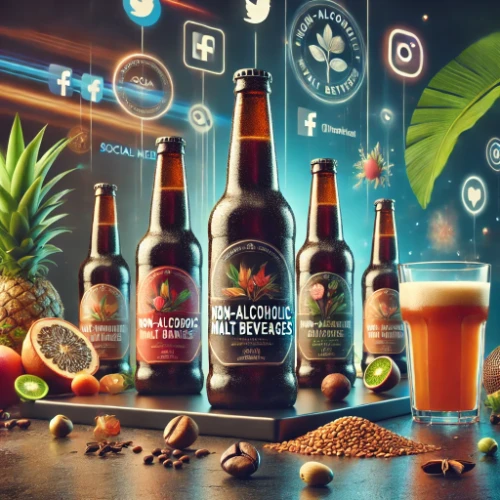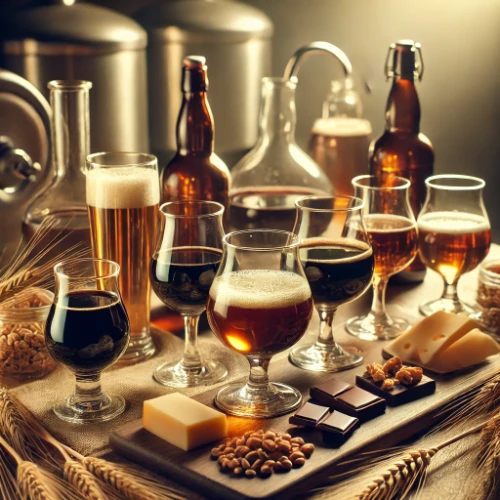Malt drinks have steadily gained popularity over the years. While not yet a mainstream hit, these beverages have a loyal following. Some consumers enjoy malt drinks not only as a beverage but also in cooking, such as using them to braise meat. One key ingredient contributing to their appeal is caramel sugar. This versatile ingredient adds flavor, color, and a natural touch, aligning with current health-conscious trends.
Growing Popularity of Malt Drinks
In 2021, a survey found that 6.1 million Germans consume malt drinks at least once a month. The number of people drinking malt beverages daily has risen by 44.4% since 2018. These drinks, often considered for children or pregnant women, have expanded to other demographics, especially among athletes. Recreational athletes appreciate malt drinks for their quick energy and low alcohol content, which is usually below 0.5% by volume.
Malt beverages resemble unfermented or partially fermented beers, which retain full flavor without high alcohol levels. Even though alcohol acts as a flavor enhancer, malt drinks manage to deliver rich taste without significant alcohol. A clinical study demonstrated that consuming up to 1.5 liters of non-alcoholic beer with 0.4% alcohol does not lead to measurable blood alcohol levels. This means even novice drivers can enjoy these drinks safely.
Caramel Sugar in malt drinks: A Key Ingredient
A central feature of malt drinks is caramel sugar, which plays a major role in enhancing flavor and appearance. Caramel sugar forms when sugar melts and caramelizes under heat. This process produces the rich taste and color that defines malt drinks. The heating transforms sugar into compounds responsible for the aroma, flavor, and deep color of the beverage.
While caramel coloring is often used in beverages solely for appearance, caramel sugar brings more to the table. It adds sweetness and depth to the drink’s flavor profile. Caramel sugar also results from a non-enzymatic browning process. Unlike the Maillard reaction, which involves proteins, caramelization focuses on sugars. This difference makes caramel sugar unique in its taste, as it offers both sweetness and a slightly bitter note.
Health Benefits of Malt Drinks
Malt drinks are valued not just for their flavor but also for their nutritional benefits. They contain proteins, minerals, and carbohydrates, which are essential for energy. Athletes and active individuals often choose malt drinks to fuel their muscles, brain, and nerves. Compared to other drinks, malt beverages are relatively low in calories—about 44 kilocalories per 100 ml, less than fruit juice or milk.
The trend toward natural and health-focused beverages has bolstered the popularity of malt drinks. These beverages are seen as natural energy sources that fit into a healthier lifestyle. With fewer calories and no additives, malt drinks are positioned as premium non-alcoholic options.
Caramel Sugar vs. Caramel Coloring
While both caramel sugar and caramel coloring can darken beverages, they serve different purposes. Caramel coloring is used to enhance appearance and must be labeled as a food additive. In contrast, caramel sugar not only contributes to color but also improves flavor. It’s classified as an independent food ingredient rather than an additive, making it more appealing for clean-label products.
The difference is crucial in product labeling. Caramel coloring adds no flavor, while caramel sugar delivers the signature taste of malt drinks. The European Union distinguishes between these two forms of caramel. If caramel is used for flavor, it is considered an ingredient, not a coloring agent. This difference highlights the importance of caramel sugar in malt beverages.
Stability and Sensory Properties of Caramel Sugar
At the Anhalt University of Applied Sciences, researchers tested various caramel sugar syrups in malt drinks. They focused on the physical stability and sensory properties of the beverages. These tests were designed to ensure that caramel sugar maintained the clarity and taste of the drinks. Malt beverages were brewed using different methods, with both filtered and unfiltered versions being produced.
The tests showed that caramel sugar had a significant impact on the drink’s turbidity (cloudiness). Adding caramel syrup after filtration increased turbidity but did not affect flavor or appearance. Tasters found that even samples with higher levels of turbidity retained their sweet, malty flavor. Both fresh and aged samples received positive reviews for their balanced taste, showing that caramel sugar offers long-lasting flavor stability.
Versatility of Caramel Sugar in Malt Drinks
One of caramel sugar’s key advantages is its versatility. Depending on the amount used, it can produce a range of colors, from light fox red to chestnut brown. This variety allows producers to adjust the drink’s appearance to meet consumer expectations. The color isn’t just for show—caramel sugar also enhances the drink’s flavor, adding both sweetness and a subtle bitterness.
Caramel sugar provides the perfect balance in malt drinks. Its slow caramelization process results in flavor compounds that deepen the taste. Unlike artificial additives, caramel sugar adds a natural richness to the drink. This makes it an ideal ingredient for premium malt beverages that emphasize clean labels and natural ingredients.
Caramel Sugar’s Growing Role in Malt Drinks
As the trend for natural, healthy beverages continues to grow, caramel sugar is becoming more important in malt drinks. Its ability to enhance both flavor and color makes it an essential ingredient. Caramel sugar aligns with the clean-label movement, offering a natural alternative to artificial additives. Malt drink producers can use it to create beverages that appeal to health-conscious consumers while maintaining rich, enjoyable flavors.
The study from Anhalt University shows that caramel sugar adds both stability and sensory benefits to malt drinks. By improving taste and appearance, caramel sugar elevates the drink, making it a popular choice for a variety of consumers. As the market for malt drinks grows, caramel sugar will continue to play a pivotal role.
Suggested Related Links for Further Exploration
- How Non-Alcoholic Malt Drinks Achieve Their Unique Flavor Profiles
Explore the science behind the flavor complexity of malt drinks, including the role of caramelization. - Perfect Pairings: Foods That Complement Malt Drinks
Discover how caramel sugar’s flavor in malt beverages pairs beautifully with both sweet and savory dishes. - Non-Alcoholic Malt Trends: Natural Ingredients Taking Center Stage
Dive into the latest trends highlighting natural ingredients like caramel sugar in malt beverages. - Caramel Sugar vs. Artificial Sweeteners in Malt Beverages
Learn why caramel sugar is the preferred choice for clean-label, premium malt drinks.




